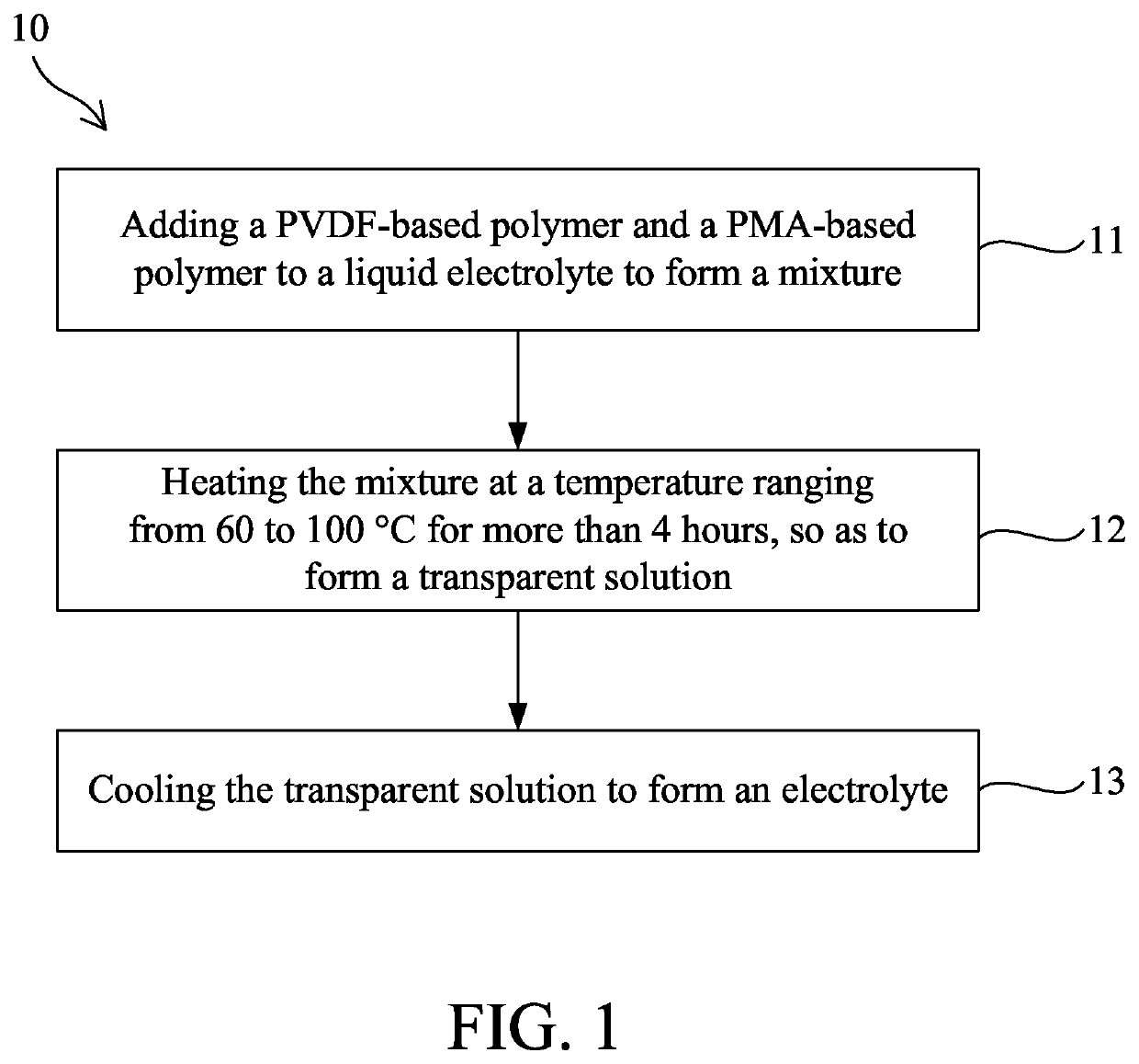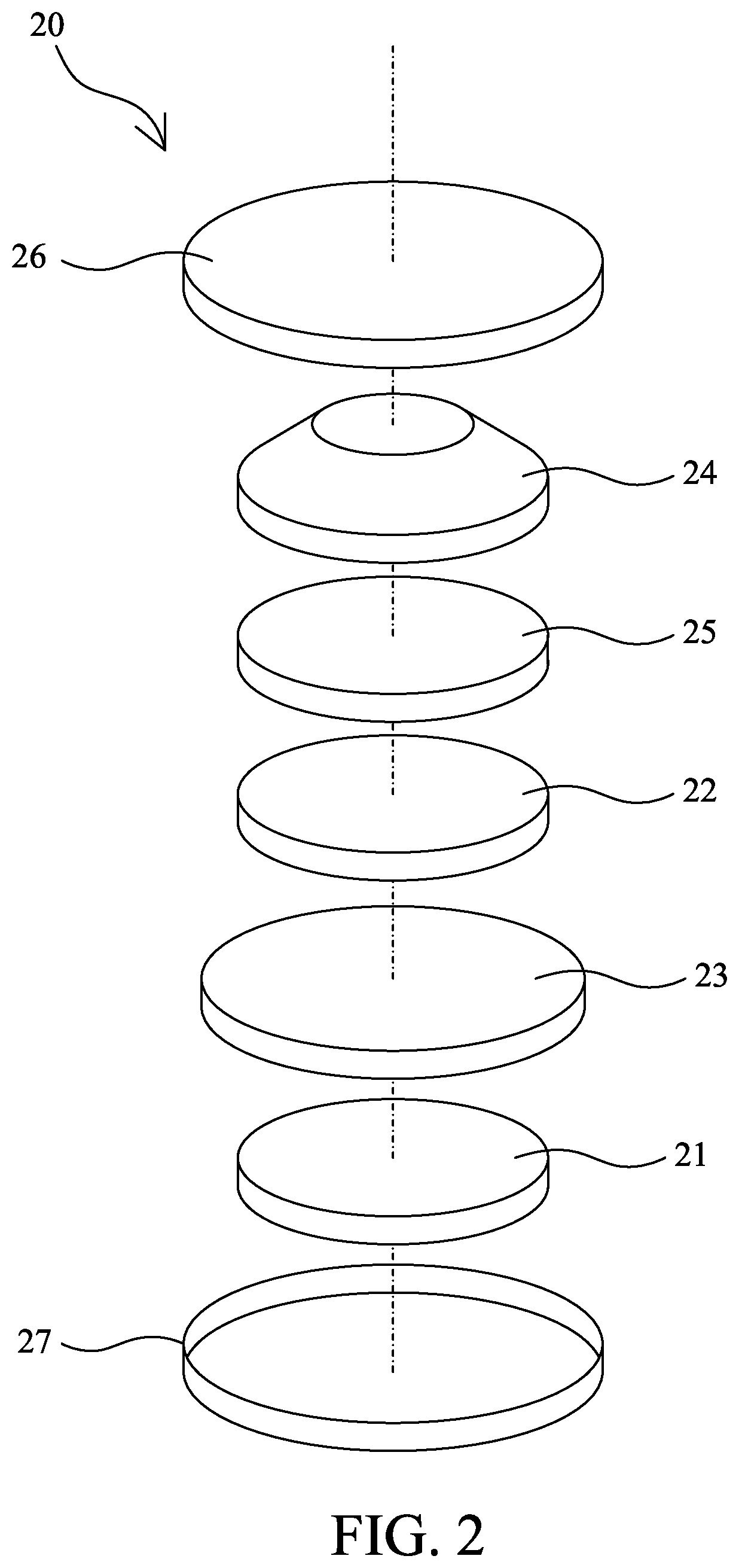Electrolyte and fabricating method thereof, and lithium battery
- Summary
- Abstract
- Description
- Claims
- Application Information
AI Technical Summary
Benefits of technology
Problems solved by technology
Method used
Image
Examples
embodiment 1
[0036]A PVDF-based polymer (such as PVDF-co-HFP) and a PMA-based polymer (such as PHEMA) are added into a liquid electrolyte to form a mixture. The liquid electrolyte has 1 M of a lithium salt (such as at least one of lithium bistrifluoromethylsulfonimide (LiTFSI), LiFSI, LiPF6, LiClO4, LiBOB, LiSO4, and LiBF4) in ethylene carbonate (EC), dimethyl carbonate (DMC), and diethyl carbonate (DEC) in a volume ratio of 1:1:1. A weight ratio of the PVDF-based polymer to the PMA-based polymer is about 4:1. A weight ratio of a total weight of the PVDF-based polymer and the PMA-based polymer (hereinafter referred to as two kinds of polymers) to the liquid electrolyte is about 2.5:100. Then, the mixture is heated between 60 and 100° C. for more than 4 hours to form a transparent solution. Then, it is allowed to stand at room temperature to cool the transparent solution to form the electrolyte of Embodiment 1.
[0037]It is worth mentioning that the electrolyte just prepared (Embodiment 1) is a flo...
embodiments 2 to 5
[0039]The fabricating methods of Embodiments 2 to 5 are roughly the same as Embodiment 1. The difference is that: a weight ratio of the PVDF-based polymer and the PMA-based polymer is different (Embodiments 2 and 3), and a weight ratio of a total weight of the PVDF-based polymer and the PMA-based polymer to the liquid electrolyte is different (Embodiments 4 and 5). Please refer to Table 1 below.
TABLE 1a weight ratio of thea weight ratio ofPVDF-based polymertwo kinds of and the PMA-basedpolymers andpolymerthe liquid electrolyteEmbodiment 1 4:12.5:100Embodiment 2 9:12.5:100Embodiment 319:12.5:100Embodiment 419:1 5:100Embodiment 519:1 6:100
[0040]It is worth mentioning that the electrolyte just prepared (Embodiments 2 to 5) is a flowable liquid (Sol Type). When the temperature is at room temperature for a period of time, the electrolyte gradually changes from a flowable-state to a gel-state (Gel Type). After that, it will maintain a gel-state at a temperature ranging from −60° C. to 8...
PUM
 Login to View More
Login to View More Abstract
Description
Claims
Application Information
 Login to View More
Login to View More - R&D
- Intellectual Property
- Life Sciences
- Materials
- Tech Scout
- Unparalleled Data Quality
- Higher Quality Content
- 60% Fewer Hallucinations
Browse by: Latest US Patents, China's latest patents, Technical Efficacy Thesaurus, Application Domain, Technology Topic, Popular Technical Reports.
© 2025 PatSnap. All rights reserved.Legal|Privacy policy|Modern Slavery Act Transparency Statement|Sitemap|About US| Contact US: help@patsnap.com



